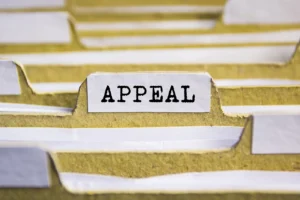
Arbitration as an Alternative in Family Law
Recently, we have had a number of cases where parties have good prospects to appeal, but a decision has been
Call us on
A decision of the Full Court in the case of Dickins and Dickins on 19 September 2012 highlights the confusion that exists not only amongst members of the public but also lawyers as to the proper manner in which to approach and assess contributions in any property settlement determination.

One of the important steps in working out what is a fair and equitable property settlement is assessing each parties’ contributions. These can include both financial and non-financial contributions made to the acquisition, conservation and improvement of property both or by either of the parties. The contributions can be made directly or indirectly. Contributions can also include those made to the welfare of the family, including contributions as a homemaker and a parent.
Many people are under the misguided notion that contributions have to be specifically identified and given a mathematical value. For instance, if a party brings a block of land worth $1 million dollars into the marriage, that party often assumes that they would get a direct credit of $1 million dollars for their contribution. It is true that one party bringing valuable property into the marriage may have an impact on the overall assessment of contributions. However, the impact of that contributed block of land on the property settlement will depend upon many other factors including the nature, extent and impact of other contributions made by the other party during the marriage.
Often, we hear clients say things such as “But I received this home from my Grandmother 15 years ago…. why does my Wife get a part of it?” The real answer is that the Wife does not get a part of it. The inherited property is accounted for and valued just like the rest of the parties’ property. Contributions made during the marriage by both parties may include this indirect financial contribution by the Husband through the inheritance of land by his Grandmother. It does not mean that the land is valued and then subtracted from the pool of assets available for division.
Any and all contributions, whether they are directly linked to property or not, need to be considered and assessed together with the nature, form and extent of all other types of contributions contemplated by the Family Law Act.
Judges must weigh and assess contributions of all kinds from all sources made by each party throughout the period of their cohabitation and then translate such an assessment into a percentage of the parties’ overall property pool in accordance with that assessment. It is important to somehow give reasonable value to all the elements that make up the entire marriage.
Often, it is lawyers who are to blame for the confusion. Lawyers often deal with contributions in terms of “initial contributions”, “contributions during the relationship” and “contributions post separation”.
While such a classification may be helpful in looking at when particular contributions were made, they bear neither relevance nor impact upon the law’s overall duty to assess contributions during the entirety of the relationship. A contribution is not more important or less important because it was made at the beginning or the end. A contribution is not more significant or less significant because it was made directly or indirectly. A contribution is not more important if it was made directly to a piece of property as opposed to being spent on luxury items.
For example, a party may bring a sum of $100,000.00 to the marriage. In one scenario, that sum is spent by the parties on an extravagant three-month honeymoon, at the end of which they have nothing and need to borrow to buy their first home. Contrast to that to another scenario where the parties only spent $5,000.00 on their honeymoon and the remaining $95,000.00 is used by the party (who brought that money into the relationship) to purchase a block of land on which to build their home. In both scenarios there is a contribution that has been made directly. A contribution does not have to be shown to be made at any particular time or directly to a piece of property. It is a contribution and therefore is assessed in a general sense by the Court.
It may be that the nature of the contribution provides extra benefits to the parties. For instance, if the party buys the block of land and contributes this to the marriage, this may be viewed ultimately as a contribution that leads to creation of greater wealth. For instance, assume that the parties did not sell the land but let it sit there for 15 years until it is worth $1 million dollars. The overall assessment of contributions has to take into account the fact that that party’s contribution was a piece of property now worth $1 million dollars. However, it still needs to be assessed against all other contributions made during the marriage. It does not have to be particularly identified as attaching to a piece of property. The party who choose to spend their $100,000.00 on their honeymoon can still claim these monies as a contribution. If those monies were not there, then it could be argued that the parties would have had to borrow and go into significant debt to meet their exorbitant honeymoon costs.
It is important to remember that each and every contribution that a party makes is different. It only has to be identified and supported by evidence to be relevant to an overall assessment of each party’s contributions.
The best illustration of this is when one looks at indirect contributions made by a spouse to the acquisition, conservation and improvement of property. Let’s assume that a Wife gives up her career early in the marriage to support her Husband in his career and to care for and raise the five young children. In that situation, the Wife’s contribution to the support of the Husband and the care of the children is an indirect contribution to the Husband’s income and accumulation of wealth from his income during the entirety of their relationship. If it was not for the Wife’s looking after the children and fully supporting the Husband, then the argument is that the Husband would not have had the opportunity to work such long hours to earn those monies for the family. Similarly, contributions to caring for the children on a day to day basis can hardly be quantified or given a mathematical value. However, our law provides that those non-financial contributions are just as important as financial contributions and have to be identified and assessed in the overall treatment of contributions.
In summary, the assessment of contributions made by parties to a relationship involves identifying individual contributions made by each and then assessing those contributions in the context of the marriage partnership. It is a discretionary exercise and different judges on different days will have different views as to the nature and effect of each party’s contributions. However, it is important to remember that a contribution does not have to be specifically tied to a piece of property, nor does it need a specific value to be more or less important than any other contribution made during the relationship.
One of the important steps in working out what is a fair and equitable property settlement is assessing each parties’ contributions. These can include both financial and non-financial contributions made to the acquisition, conservation and improvement of property both or by either of the parties. The contributions can be made directly or indirectly. Contributions can also include those made to the welfare of the family, including contributions as a homemaker and a parent.

Recently, we have had a number of cases where parties have good prospects to appeal, but a decision has been

Recently, we have had a number of cases where parties have good prospects to appeal, but a decision has been

Recently, we have had a number of cases where parties have good prospects to appeal, but a decision has been

© 2024 Hartley Family Law – All Rights Reserved | Privacy | Terms & Conditions

The Privacy Statement of the Company is incorporated into these Terms and Conditions. The Company respects the privacy of all its customers and business contacts. The Company is subject to the requirements of the National Privacy Principles which are contained in the Privacy Act.
1. How is personal information collected?
Your name, email address and phone number are collected on the contact form to allow the Company to contact you.
If you email or phone the Company directly, then the Company may record your personal details.
Your personal information may be used to:
a) Improve service to you, the customer
b) The Company may use personal information about you for marketing and research purposes. If you do not wish this to occur, please contact us and we will ensure this does not occur
c) Your personal information is not disclosed to any organisation outside of the Company.
2. Will personal information be given to anyone else?
The Company does not sell or provide your personal information to any other company.
3. Security of personal information
The Company employees are required, as a condition of their employment, to treat personal information held by the Company as confidential, and to maintain the confidentiality of that personal information.
The Company protects the personal information it collects in a secure database.
4. Access and correction
You can access your data at any time by contacting the Company directly.
You also have the right to ask us to correct information about you which is inaccurate, incomplete or out of date.
We ask you to contact the Company by email or phone using the Company contact details if you wish to access or correct any of your personal details.
5. Online privacy issues
To the extent that this Privacy Policy applies to online privacy issues, it is to be read as forming part of the terms of use for our website. When you deal with the Company whether online or otherwise, the Company takes its privacy obligations seriously.
6. Additional privacy information and how to contact the Company
The Company may change its Privacy Policy at any time.
For further information about privacy issues and the protection of privacy visit the Australian Federal Privacy Commissioner’s website at www.privacy.gov.au. If you feel that The Company is not complying with this Privacy Policy, or if you have other privacy concerns, please contact the company.